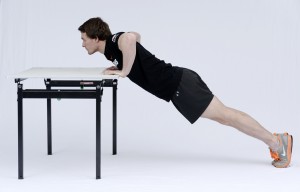
Avoiding injury
When you are exercising, it is important to make sure that everything is done properly. Exercise can put the body under a lot of pressure and this can lead to injuries. Your muscles and joints will bear the brunt of this pressure and many people do not realize just how easy an exercise injury is to sustain. One of the problems is over-exertion – some people push themselves just that little bit harder because they think they will get good results, but the damage that this can do can far outweigh the benefits.
What are strains and sprains?
A strain happens to the muscles when the fibers are torn or stretched. This can happen when the muscle is stretched too much or if it has had to contract far too quickly. The legs and back are the most common places for strains to happen and symptoms will include bruising, swelling, pain and spasms in the muscle.
A sprain is something that happens to the ligaments in the body. It will happen to the ligament when stretched, torn or twisted and usually occurs because there is too much pressure on a joint. Sprains often affect the ankles, knees and wrists. The sufferer will have pain, swelling, tenderness and bruising.
It is important to rest when something like this happens – most strains and sprains will heal well at home if you are careful, but if you have very intense pain or have trouble with movement then you should visit a doctor. If the rest and self-treatment does not work, it could indicate that the injury is more severe than first thought and you could have other problems, such as a fracture.
Ways to avoid injury
The warm-up is an important part of any workout, no matter what type of exercise you want to do. Before every workout session, you should have a warm-up and build up the workout over time, rather than trying to do too much at once. The aim of the warm-up is to help the muscles to get used to stress; this gives them more chance of avoiding injury. You can also make sure that you are wearing the correct sportswear. Items such as the right running shoes, compression shorts and compression socks can all give the right support and it is worth a look at items such as tommiecopper.com shorts.
Repetition can also be a problem when exercising and while it is essential in some workouts in order to help you to get it just right and build strength, it can put the muscles under strain. Variety in workouts is a good idea and this is why runners, for example, include other types of exercise in their training, such as cycling.
Resting the muscles between workouts is another essential part of avoiding injury. It is not absolutely essential to exercise every day. Muscles do become tired and they do need to recover from the exercise. When planning your exercise regime you need to ensure that you allow enough time between workouts for the muscles to rest.
When planning your exercise regime, give plenty of attention to the way that you exercise and make sure that you are properly prepared. This will help you to avoid injury and allow you to get fitter in a much safer way.




